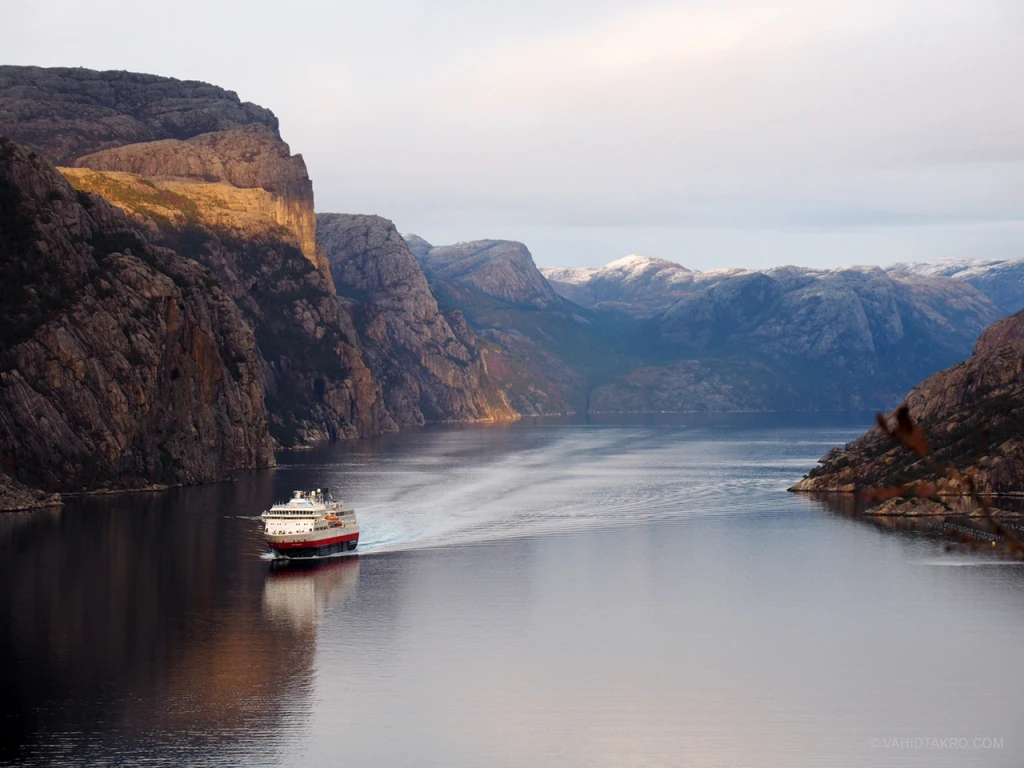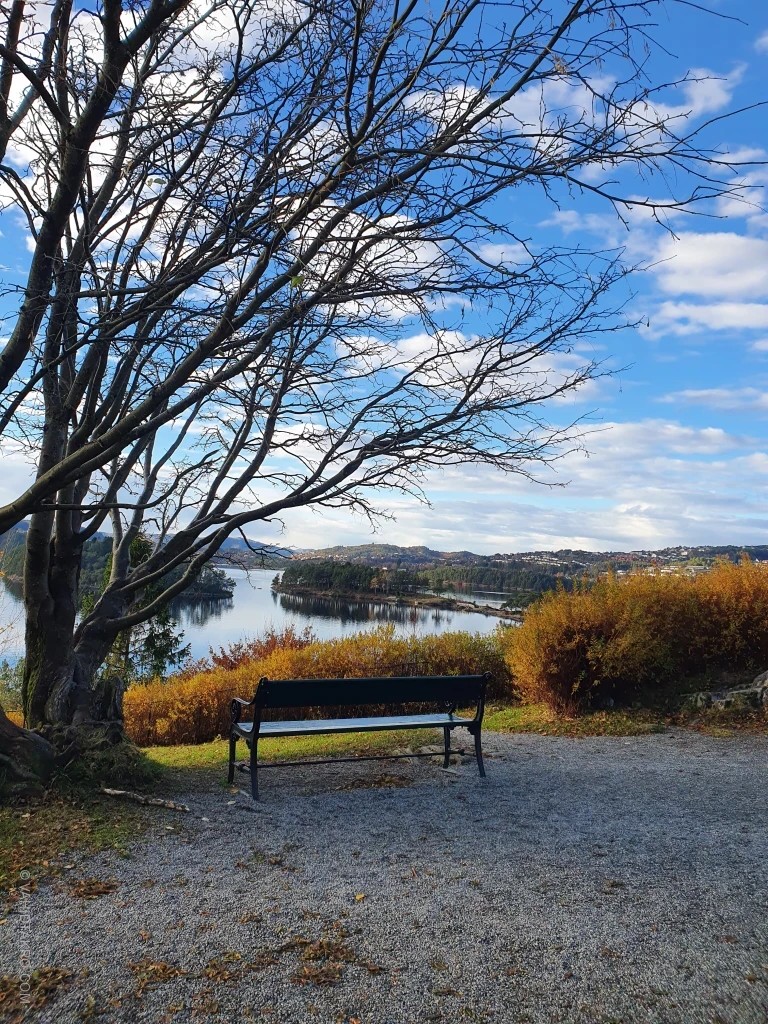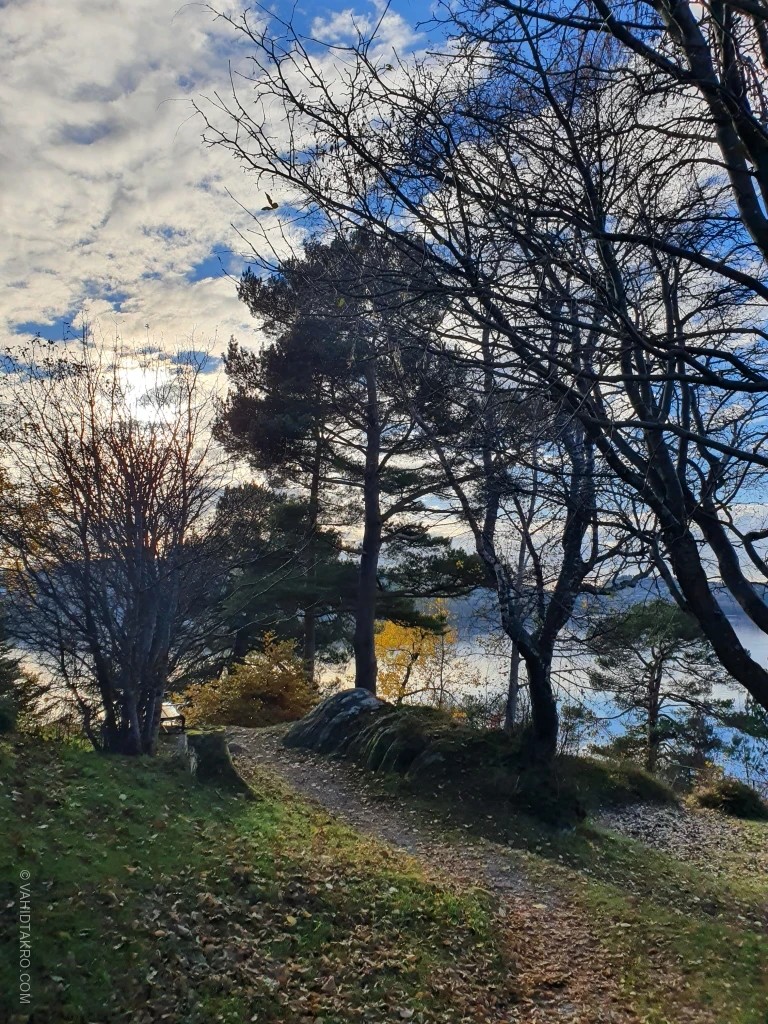Standing before the majestic fjords of western Norway, where mountains plunge dramatically into deep blue waters, I find myself in the very landscapes that inspired Edvard Grieg’s most profound musical utterances. As an Iranian, I cannot help drawing parallels between these Norwegian scenes and the images of nature that have shaped Persian poetry for more than a millennium, the rose gardens of Shiraz, the oases of the desert, the snow-crowned peaks of the Alborz.
Norway’s Landscape: Grieg’s Musical Canvas
The Fjords: Nature’s Grand Symphony
Norway’s fjords, with their towering rock faces and still, profound waters, offered Grieg a natural symphony that he translated into musical form. In works such as “Morning Mood” from Peer Gynt, we hear the gradual brightening of these dramatic vistas, sunlight slowly touching the mountain peaks, casting long shadows over the water.
The fjords’ unique acoustics, where sound travels far across the water and rings against stone, seem to have shaped Grieg’s sense of space and resonance. His sustained notes and long crescendos echo the way sound behaves in these natural amphitheaters.

The Mountains: Peaks of Musical Expression
Norway’s mountain ranges, especially Jotunheimen and Rondane, with snow-clad summits and alpine meadows, find their musical equivalents in Grieg’s soaring melodies and dramatic contrasts. His passages that grow from quiet reflection to powerful climaxes mirror the experience of ascent, a steady climb, pauses for breath, the triumphant view from the summit.
In works like the Piano Concerto in A minor, we hear the full spectrum of mountain experience, peaceful valleys, flashing streams, thunderous avalanches, the serene grandeur of great heights.
The Forests: Whispers of Ancient Wisdom
Norway’s forests, with venerable pines and moss-clad rock, offered a sense of timeless mystery. The Lyric Pieces often render these quiet woodland conversations, the rustle of leaves, the distant call of birds, the soft murmur of hidden brooks.
Translated into musical language, these sounds create a space of contemplation and inner calm that resonates with anyone who has found shelter in nature’s quiet.
The Iranian Natural World: Poetry’s Eternal Muse
The Rose Gardens of Shiraz
In Persian poetry, the rose garden is more than beauty, it mirrors the full range of human feeling and spirit. The word gol appears again and again, each time bearing new layers of meaning, love, beauty, transience, the glimmer of the divine.
Persian poets linger over the rose, its fragrance, its thorns, its brief yet glorious bloom. This is akin to Grieg’s approach to musical beauty, an awareness that true beauty is interwoven with longing, pain, and the knowledge of impermanence.
The Desert: Vastness and Solitude
The Iranian desert, with its endless dunes and shimmering mirages, has inspired some of the deepest meditations on human solitude and spiritual seeking. Poets like Hafez and Rumi use desert imagery to explore the soul’s journey, the search for truth, the relation between finite and infinite.
This desert awareness, a sense of vastness, quiet, and quest for meaning, finds its counterpart in Grieg’s more contemplative works, music that seems to rise from an inner stillness.
The Mountains: Sacred Heights
The Alborz range, rising dramatically from the Caspian shore, has been sacred to Iranians for millennia. These peaks, often veiled in mist and mystery, symbolize the bond between earth and sky, the material and the spiritual.
In Persian poetry, mountains are places of revelation where poets receive inspiration. This sacred relation to high places mirrors Grieg’s own bond with Norway’s mountains, a source of musical inspiration and spiritual renewal.
Musical Landscapes: Grieg’s Nature Paintings
“Morning Mood”: The Birth of Light
Grieg’s “Morning Mood” may be the most famous musical dawn in classical music. The gradual emergence of the melody, like the sun rising over fjords, gives a sense of natural unfolding that feels both inevitable and wondrous.
The structure of the piece, beginning with a simple line that slowly expands and grows richer, mirrors the spread of light across a landscape, first the mountain tops, then the valleys, then the entire scene.
“In the Hall of the Mountain King”: Nature’s Force
This famous piece depicts the raw, untamed power of Norway’s nature, the crash of waterfalls, the roar of avalanches, the fierce winds that sweep the rock. The relentless rhythm and mounting intensity conjure a force that seems unstoppable.
Even within this wildness there is reverence, an awe before the grandeur of nature, and an understanding of our smallness before elemental power.
Lyric Pieces: Intimate Studies of Nature
Many of the Lyric Pieces function as intimate nature studies, each portraying a different aspect of the Norwegian landscape. “Butterfly” flits with summer air, while “To Spring” celebrates life’s return after a long winter.
Like Persian miniatures, these pieces capture the essence of natural moments in small, perfect forms, each a complete world suspended in musical time.

Nature in Persian Poetics: A Garden of Words
The Garden as Paradise
In Persian poetry, the garden stands for paradise on earth, a place where the divine and the human meet. Poets like Saadi and Hafez use the garden to contemplate love, beauty, and spiritual fulfillment.
The Persian garden, with its geometry and emblematic plants, embodies our desire to bring order and beauty to nature. This parallels Grieg’s desire to render nature’s sounds into musical order.
Nightingale and Rose: Love in Nature
The relation between nightingale and rose is one of Persian poetry’s most enduring emblems. The nightingale’s song, full of love and longing, finds its counterpart in the rose’s silent beauty and passing bloom.
This interplay of sound and silence, of outward expression and inward reflection, mirrors the balance between Grieg’s extroverted works and his more intimate Lyric Pieces.
The Four Seasons: Nature’s Eternal Cycle
Persian poetry often meditates on the cycle of seasons. Spring is renewal and hope, summer the fullness of life, autumn the beauty of ripening and decline, winter the time for reflection and preparation.
Grieg’s music reflects this seasonal awareness, with pieces that evoke the moods and colors of each time of year.
The Universal Language of Nature
Sound and Silence
Both Norwegian and Iranian traditions grasp the profound relation between sound and silence. In Norway’s nature, the stillness of mountains and fjords amplifies wind and water. In Persian verse, silence between words can carry as much meaning as the words themselves.
Grieg’s careful use of rests and dynamic contrast reflects this insight. The spaces between notes matter as much as the notes.
The Eternal and the Fleeting
Both traditions wrestle with the tension between permanence and change. Norway’s nature, with ancient mountains and changeable skies, represents both constancy and transformation. Persian poetry, with its brief rose bloom and the nightingale’s enduring song, contemplates the same paradox.
Grieg gives this tension beautiful voice, each moment unique and yet part of an eternal pattern.
The Sacred in the Natural
Both traditions find the sacred in the natural world. For Grieg, Norway’s landscape was not merely scenic, it was a source of spiritual inspiration. For Persian poets, nature reflects divine beauty and wisdom.
This sacred relation yields music and poetry that go beyond description, becoming expressions of the soul’s bond with the earth.
Contemporary Reflections: Nature in a Changing World
Environmental Awareness
Both Norway and Iran have cultivated deep environmental sensibilities grounded in their relations with nature. The Norwegian idea of friluftsliv, a life lived outdoors, and the Persian tradition of garden design both express a desire to live in harmony with the natural world.
Grieg’s music, bound to Norway’s nature, reminds us of the need to preserve these landscapes for future generations.
Cultural Identity and Natural Heritage
Both cultures draw part of their identity from their natural heritage. Norwegian music and Persian poetry owe much of their character to their respective environments.
This suggests that cultural diversity is not only about languages and customs, it is also about the varied ways we connect with the natural world.

A Shared Earth, A Shared Humanity
Standing before Norway’s fjords with Grieg’s music in mind, I recall Rumi’s words: “The garden of the world has no limit, except in your mind.” The natural world speaks a universal language that flows beyond cultural borders.
Grieg’s Norwegian landscapes and Persian poetic tradition, despite the space between them, share an understanding of nature’s power to inspire, to heal, and to bind us to something greater than ourselves. Both traditions know that nature is not a backdrop to human life, it is a partner and a teacher.
Norway’s fjords and Iran’s rose gardens may be worlds apart, yet they draw from the same earth and sky, and they kindle the same human spirit. Grieg’s music and Persian poetry, each in its own way, celebrate this bond between people and the land.
In a world that grows ever more urban and technological, these traditions remind us to keep our ties with nature. They show that our most authentic expressions, musical or poetic, rise from our living relation to the ground that sustains us.
Connection with nature, whether voiced through Grieg’s Norwegian vistas or through Persian poetic tradition, reveals a simple truth: we are all children of the same earth, seeking our place within the vast, beautiful world that surrounds us.

